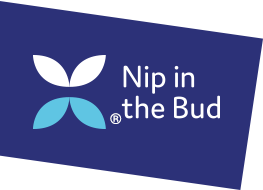Dyslexia in Children fact sheet
Our film explores what dyslexia is and how it might feel to have dyslexia.
Our factsheet explores signs of dyslexia. This introductory factsheet contains headline information.
So, what is dyslexia?
In simple terms, dyslexia is a developmental difference in learning which affects the ability to learn to read and write fluently. Dyslexia often runs in families and without intervention, affected children are at risk of educational underachievement.
Dyslexia primarily impacts reading and writing but people with dyslexia may experience a wide range of difficulties including memory problems, organisational difficulties and problems in information processing especially in the language regions of the brain.
Dyslexic people may have difficulty processing and remembering information they see and hear; in turn this can affect learning across the curriculum, for example in mathematics and when learning a foreign language.
Dyslexia occurs across the range of intellectual abilities.
Every dyslexic child is an individual. Every experience of dyslexia is unique.
Some students with dyslexia may avoid reading because it can be both tiring and stressful. Their lack of ‘print experience’ can exacerbate their basic difficulties and compromise further their ability to keep pace with their classmates. In turn, this may lead to declining levels of self-esteem and confidence.
Although Dyslexia often creates challenges for children, dyslexic children can also develop amazing talents if they are given the time and space to explore other ways of learning which work for them.
Signs of dyslexia (Primary school age)
- If a child has an uneven academic profile – strong in some areas, weaker in others – this may be an indication of dyslexia.
- If family members have similar weaknesses.
- Slow or problematic development of speech and language
Remember that not all dyslexic children will display the same weaknesses and abilities. Some of the main issues are:
- Slow speed of processing information.
- Difficulty following instructions.
- Difficulty finding the right word or forming answers to questions.
- Forgetting words altogether.
- Poor motor skills and pencil grip leading to poor handwriting and messy work.
- Trouble retaining phonetic information (smaller sounds that make up words).
- Confusion between letters which look and sound similar, particularly b/d, p/g, p/q, n/u, m/w.
- Slow progress with reading and reading aloud.
- Finding it difficult to blend sounds together.
- Struggle to learn sequences, such as days of the week, months of the year, the alphabet or times tables.
- Difficulty with time concepts, learning to tell the time, keeping to time, yesterday, today, tomorrow.
- Confusion with place value e.g., units, tens, hundreds.
- Differentiating between up and down, left and right, east and west.
Next steps
If there are concerns that a child may be dyslexic it would be good for the parent and the teacher/or the Special Educational Needs Coordinator (SENCO) to discuss this and perhaps apply for a diagnostic assessment carried out by a certified dyslexia assessor. In the meantime, the child could start receiving the appropriate support they need straight away in the classroom setting.
If dyslexia is left untreated it can lead to:
- Frustration
- Low self esteem
- Anxiety or other co-occurring mental health conditions
- Withdrawal from friends or others
- Behaviour issues
Potential strengths in dyslexic children
- Creativity
- Imagination
- Curiosity
- Being good at solving problems and puzzles
- Thinking outside the box
- Thinking in pictures rather than words
- Showing talent in other areas such as sport, art, music
- Being observant
- Being empathetic and intuitive

